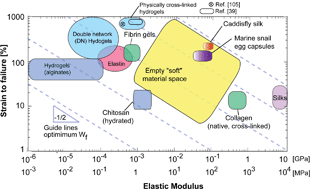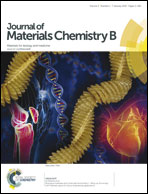Biological materials and molecular biomimetics – filling up the empty soft materials space for tissue engineering applications
Abstract
An extensive range of biomaterials, frequently derived from extracellular matrix (ECM) proteins or other natural biopolymers, have been developed for biomedical applications. Their mechanical response, a key requirement for regenerative medicine, is often stiff but exhibits limited extensibility (e.g. silk), or inversely, is compliant with higher strain to failure (e.g. elastin). While synthetic biocompatible materials exhibiting a mechanical response between these boundaries are rare, several biological materials demonstrate unexpected combinations of these properties. In order to replicate these performance metrics in synthetic systems, a central requirement is to first reveal the molecular design of their constituent building blocks, which has traditionally been an extremely time-consuming task. Here, we highlight the recent application of Next Gen sequencing technologies for the characterization of several protein-based natural biopolymers, a technique which circumvents this research bottleneck. Successful molecular biomimicry of these model protein systems could thus have the potential to significantly expand the range of intrinsic material properties available for biomedical applications.


 Please wait while we load your content...
Please wait while we load your content...